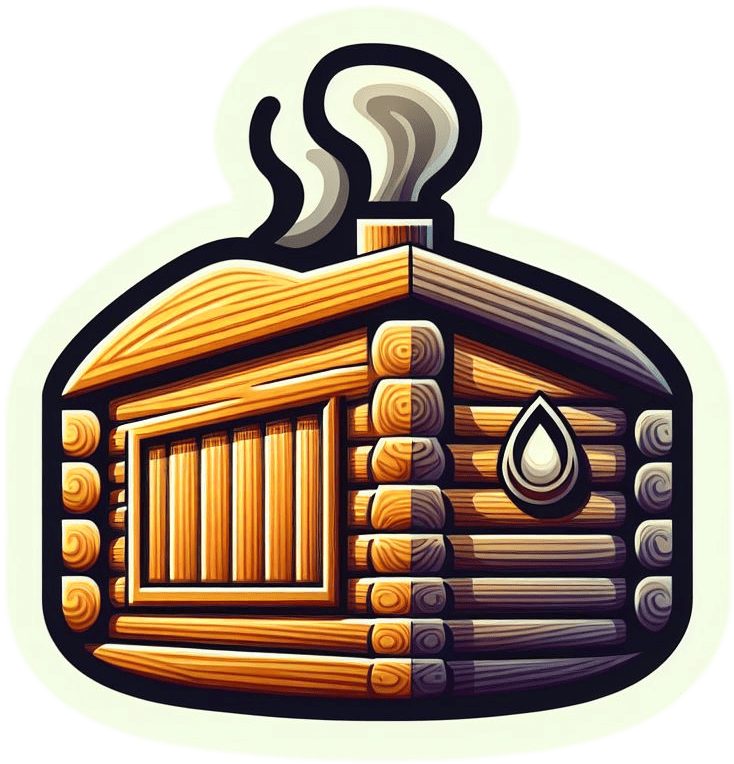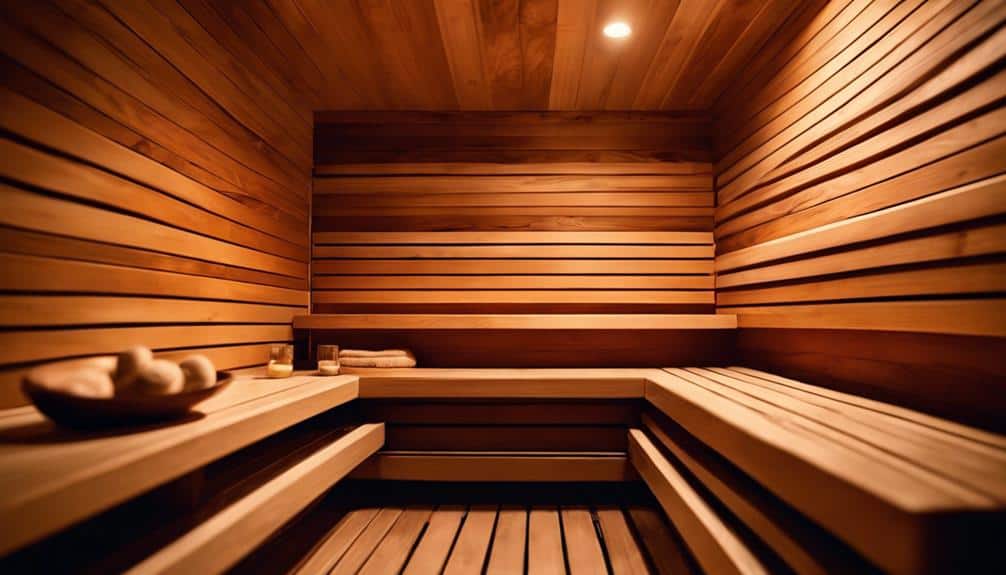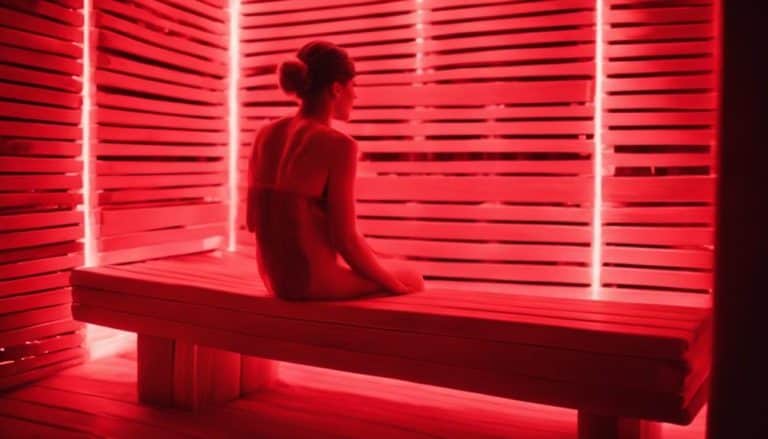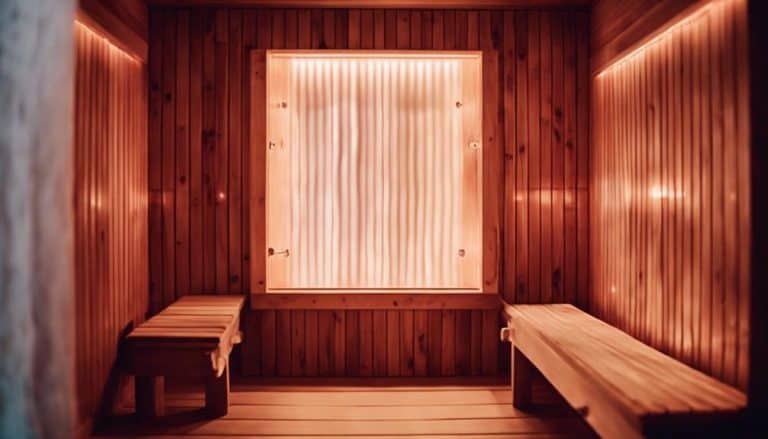Best Wood for Sauna Walls
As I step into the sauna, the warm, earthy scent of wood surrounds me, creating an atmosphere of relaxation and rejuvenation. The choice of wood for sauna walls is crucial, as it can greatly impact the overall experience.
So, which wood is the best? Well, let's explore the options and discover the unique qualities that each type offers. From the water-repellent properties of Western Red Cedar to the delicate scent of Canadian Hemlock, there are several intriguing choices that will undoubtedly enhance your sauna experience.
But which wood will reign supreme? Let's find out together.
Key Takeaways
- Western Red Cedar: Exceptional durability, pleasant aroma, and timeless appearance enhance the sauna experience.
- Canadian Hemlock: Soft wood, water-repellent properties, and durability make it ideal for sauna walls.
- Common Aspen: Versatile and resilient wood with a smooth texture, suitable for sauna benches, interior walls, and exterior paneling.
- Nordic Spruce: Light coloring, natural insect repellent, and therapeutic aroma create a traditional European sauna experience.
Western Red Cedar
Western Red Cedar is the preferred choice for sauna walls due to its exceptional durability, resistance to warping and cracking, and ability to enhance the overall sauna experience with its classic look and pleasant aroma. This wood type is known for its strength and longevity, making it an ideal option for sauna walls that are exposed to high levels of heat and moisture. Its low-density nature also makes it comfortable to sit on, making it perfect for sauna benches and wall paneling.
Not only does Western Red Cedar offer practical benefits, but it also adds a touch of elegance to any sauna. Its rich, reddish-brown color and fine grain create a visually appealing appearance that's both timeless and inviting. Additionally, the natural oils present in Western Red Cedar give off a distinct, pleasing aroma that further enhances the sauna experience.
For those looking for an even more unique and exotic appearance, thermally modified Western Red Cedar is an excellent choice. This process involves subjecting the wood to high temperatures, which not only stabilizes the material but also brings out unique color variations. Furthermore, the thermal modification inhibits mold growth, ensuring a healthier sauna environment.
Canadian Hemlock
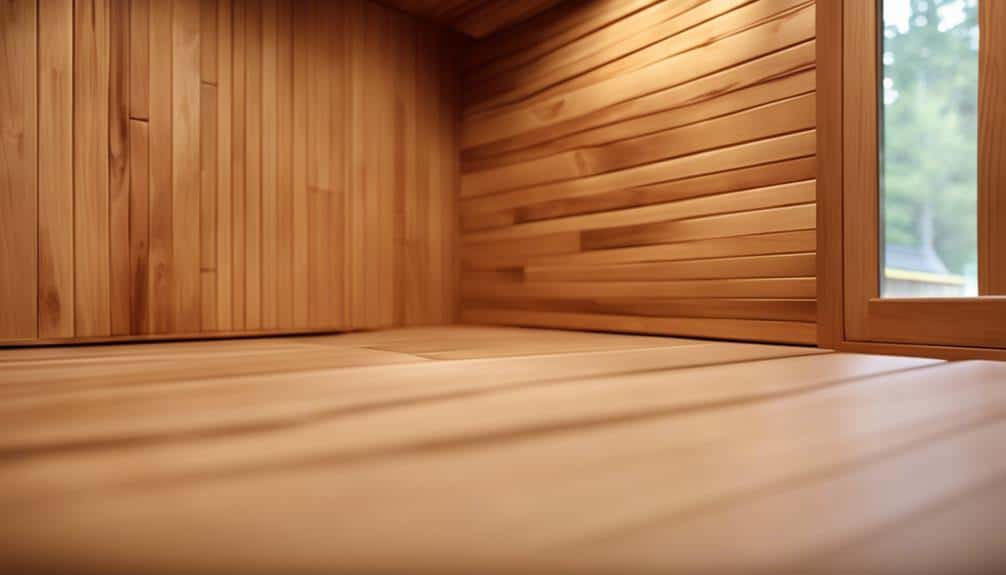
Canadian Hemlock is a highly sought-after wood for sauna interiors and exterior walls due to its soft texture, coarse grain, and light buff color. Here are four reasons why Canadian Hemlock is an excellent choice for sauna construction:
- Soft Wood: Canadian Hemlock is a soft wood, which makes it comfortable to touch and sit on in the sauna. Its smooth surface adds to the overall relaxation experience.
- Coarse Grain: The coarse grain of Canadian Hemlock adds a natural and rustic appearance to sauna interiors and exterior walls. This unique feature gives the sauna a charming and inviting ambiance.
- Light Buff Color: The light buff color of Canadian Hemlock creates a soothing atmosphere in the sauna. The neutral shade complements various interior design styles and helps create a serene environment.
- Durable and Knot-Free: Canadian Hemlock is known for its durability and resistance to warping. It's also knot-free, ensuring a smooth and even surface. These qualities make Canadian Hemlock a reliable choice for long-lasting sauna construction.
With its water-repellent properties and suitability for sauna interiors and exterior walls, Canadian Hemlock is the perfect wood for creating a durable and aesthetically pleasing sauna.
Common Aspen
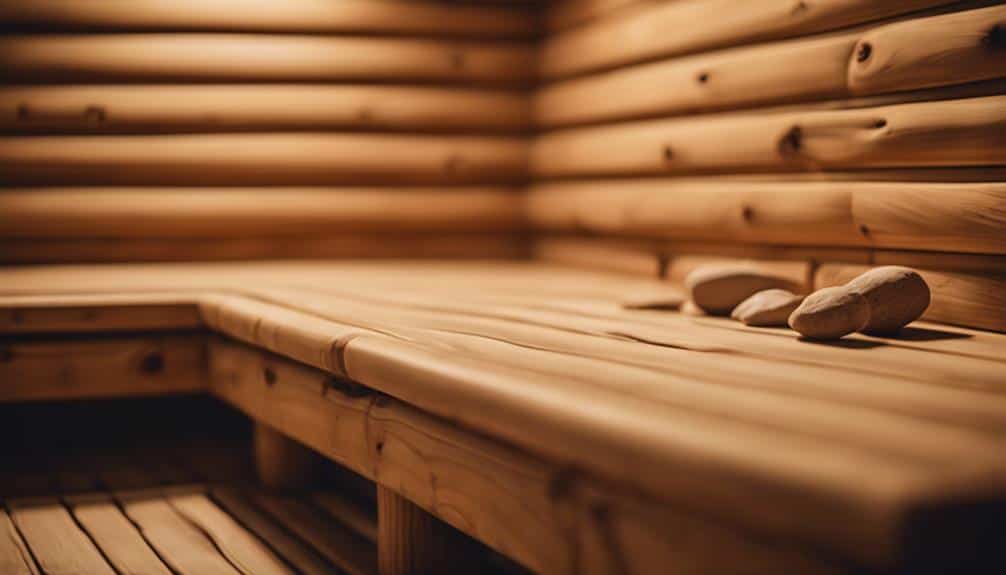
Common Aspen is a versatile and resilient wood that's highly favored for sauna walls due to its smooth texture and practicality. As a member of the willow family, Aspen is a deciduous tree that grows in Europe, Asia, and northern Africa, making it widely available for sauna construction. What sets Common Aspen apart is its ability to withstand the high temperatures and humidity levels found in saunas.
This wood type doesn't secrete resin, ensuring that it won't stick to your skin or clothes while inside the sauna. Additionally, Common Aspen's smooth texture provides a comfortable and enjoyable experience, as it doesn't splinter or overheat. Its light tone also allows for easy customization, as it can be painted to match any desired aesthetic.
Common Aspen's versatility extends beyond just sauna walls; it's commonly used for sauna benches, interior walls, and exterior paneling. Its practicality and reliability make it an excellent choice for any sauna construction project.
Nordic Spruce
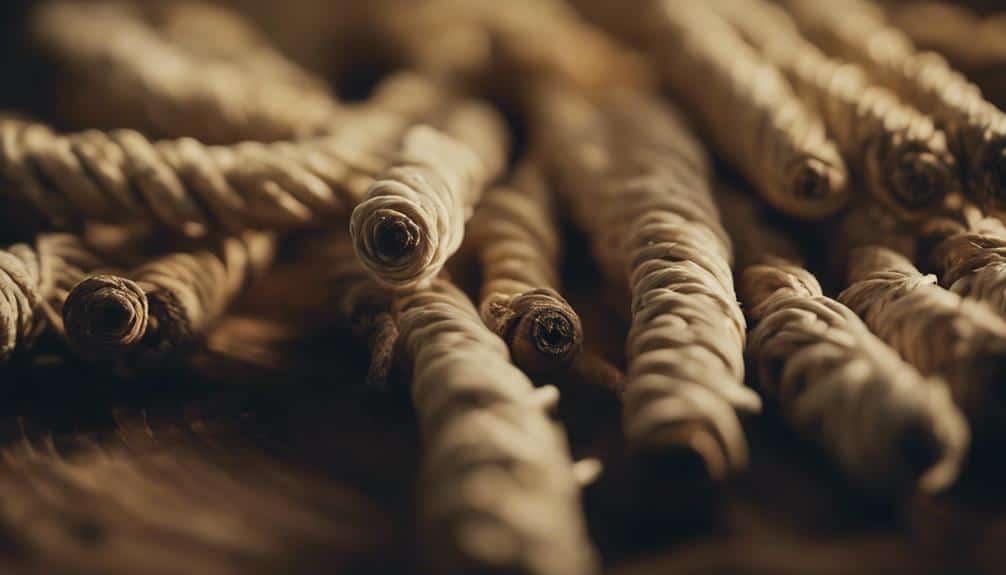
Nordic Spruce is a highly sought-after wood for sauna walls, known for its light coloring and therapeutic aroma. Here are four reasons why Nordic Spruce is an excellent choice for sauna construction:
- Light coloring: The light color of Nordic Spruce can brighten up sauna interiors, creating a welcoming and relaxing atmosphere. It enhances the overall aesthetic appeal of the sauna, making it a popular choice for those seeking a traditional European sauna experience.
- Insect repellent: Nordic Spruce naturally contains an insect repellent, making it an ideal wood choice for sauna construction. The repellent properties help to keep pesky insects at bay, ensuring a comfortable and enjoyable sauna experience.
- Durability and resistance to decay: Nordic Spruce is known for its durability and resistance to decay. This makes it a reliable option for sauna walls, as it can withstand the high humidity and temperature fluctuations typically found in saunas. It ensures that the sauna walls will remain in excellent condition for many years to come.
- Therapeutic aroma: The aroma of Nordic Spruce adds to the overall relaxation and therapeutic experience of a sauna. The pleasant scent helps to create a soothing environment, promoting a sense of calmness and well-being.
Douglas Fir
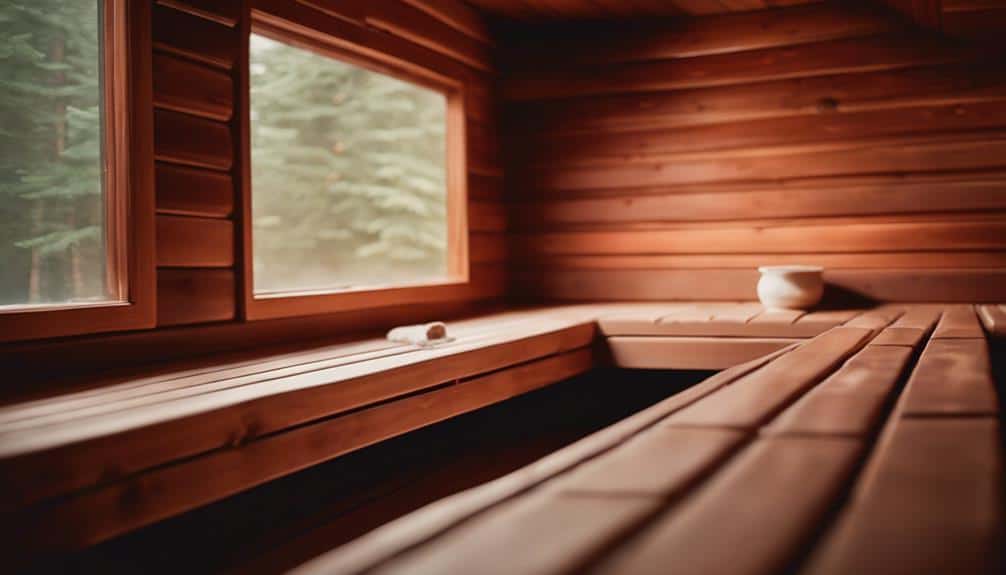
Douglas Fir is a highly durable and visually appealing wood commonly used for sauna walls. Its rot resistance and ornamental appearance make it an excellent choice for creating a cozy sauna environment. With its light brown color and straight grain pattern, Douglas Fir adds a touch of elegance to any sauna interior.
One of the main advantages of using Douglas Fir for sauna walls is its durability. This wood is known for its strength and ability to withstand high levels of moisture and heat. It has a natural resistance to rot, ensuring that your sauna walls will remain intact and free from damage for a long time.
In addition to its durability, Douglas Fir also offers a visually appealing option for sauna interiors. The light brown color of this wood gives the sauna a warm and inviting atmosphere. The straight grain pattern adds a touch of sophistication, enhancing the overall aesthetic of the sauna.
Furthermore, Douglas Fir doesn't seep resin like some other types of wood, making it ideal for sauna construction. This means that you won't have to worry about any sticky residue on your sauna walls, providing a clean and pleasant sauna experience.
Frequently Asked Questions
What Is the Best Wood to Use for a Sauna?
I believe the best wood for a sauna is Western Red Cedar. It offers benefits such as durability, resistance to warping and cracking, and a classic sauna aesthetic. Other sustainable options and exotic woods can also enhance the sauna experience.
What Walls Are Best for Sauna?
I believe the best walls for a sauna are made of cedar. Cedar offers numerous benefits such as durability, resistance to moisture and heat, and an appealing aesthetic. It also retains heat well and requires proper insulation for optimal performance.
What Can I Use Inside the Walls of a Sauna?
I can use a variety of wood options for the walls of a sauna. Cedar is a popular choice due to its benefits such as moisture resistance and durability. Proper maintenance and insulation are important for preventing mold and mildew.
What Is the Least Toxic Wood for a Sauna?
The least toxic wood for a sauna is cedar. It is naturally resistant to mold and mildew, emits a pleasant aroma, and has a low resin content, reducing the risk of skin or respiratory issues.
Conclusion
In conclusion, when it comes to choosing the best wood for sauna walls, options such as Common Aspen, Western Red Cedar, Canadian Hemlock, and Nordic Spruce offer unique qualities that enhance the sauna experience.
Whether you desire a light tone, water-repellent properties, even heat radiation, or a delicate scent, these wood types provide the necessary features for a comfortable and aesthetically pleasing sauna.
Remember, the right choice of wood can transform your sauna into a sanctuary of relaxation and rejuvenation.
